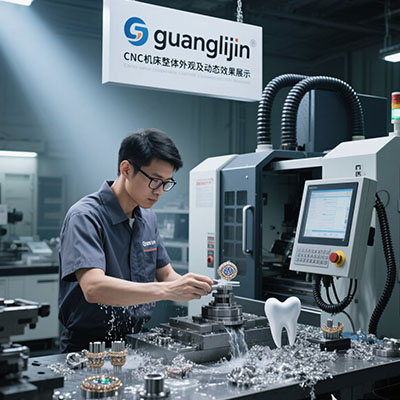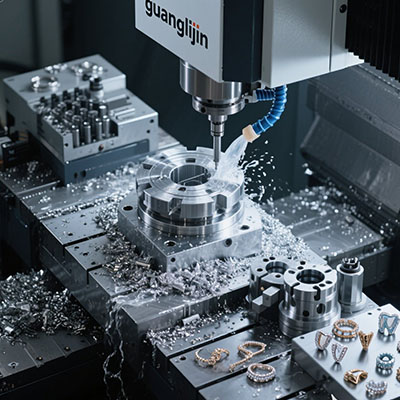Industrial 16-Axis CNC Machine: Complex Part Solutions
Transforming Complex Component Manufacturing
Modern industrial components feature incredible geometric complexity. Traditional machining methods cannot produce these efficiently. This creates production bottlenecks and quality issues.
16-axis CNC technology eliminates these limitations. It machines complex parts from all angles in single setups. This approach reduces errors and accelerates production dramatically.
Industrial Manufacturing Challenges
Problem: Multi-Operation Accumulated Errors
Complex industrial parts often require multiple machining operations. Each setup introduces potential alignment errors. These small deviations accumulate throughout production.
Solution: Complete Machining Integration
16-axis systems handle turning, milling, and drilling simultaneously. They maintain positional accuracy below 5 microns throughout extended operations. This reduces cumulative errors by 80% according to SME manufacturing data.
Case Study: Hydraulic Manifold Production
Our team encountered a critical challenge in 2025 with complex hydraulic manifolds. The intersecting internal channels and angled ports required 12 separate operations. Advanced multi-axis programming solved these issues effectively.
Manufacturing Efficiency Comparison
| Production Metric | Project A: Traditional Methods | Project B: 16-Axis CNC |
|---|---|---|
| Setup Operations | 8 separate setups | Single setup |
| Positioning Accuracy | ±20μm | ±4μm |
| Production Lead Time | 6 days | 20 hours |
| Quality Inspection Time | 4 hours | 50 minutes |
Implementing Multi-Axis Technology
Successful implementation requires careful planning. Follow this structured approach for optimal results:
Five-Step Implementation Strategy
Step 1: Component analysis and process mapping. Identify all features requiring complex tool access and special operations.
Step 2: Tooling selection and preparation. Choose extended reach tools and specialized cutters for specific features.
Step 3: Fixture design and verification. Ensure rigid clamping without interference with full axis movements.
Step 4: CAM programming and simulation. Develop efficient tool paths and verify collision-free operations completely.
Step 5: Process validation and optimization. Conduct test runs and refine parameters for maximum efficiency.
Avoiding Implementation Pitfalls
Multi-axis machines require advanced CAM software and highly skilled programmers.
Inadequate preparation causes costly collisions and machine damage.
Another common mistake involves workpiece fixturing. Complex components need specialized fixtures that provide access from multiple angles while maintaining absolute rigidity.
Industry Performance Insights
Recent manufacturing studies reveal impressive data. Companies using 16-axis technology report 70% faster production cycles for complex components. They achieve 55% reduction in quality issues according to Modern Machine Shop magazine.
Interestingly, the operational costs are comparable to conventional methods. The reduced setup times and improved efficiency quickly offset the higher initial investment.
Future Manufacturing Trends
Artificial intelligence integration is accelerating. Machine learning algorithms now optimize tool paths in real-time. This adapts to material variations and tool wear automatically.
Counter-intuitively, sometimes reducing axis movements improves results. We discovered that strategic planning of operations minimizes unnecessary complexity while maintaining precision.
Multi-Axis Implementation Checklist
□ Complete component analysis and feature identification
□ Verify tooling availability and reach requirements
□ Validate fixture design and clamping force calculations
□ Confirm CAM programming and simulation completion
□ Check machine calibration and axis alignment
□ Verify coolant and chip management systems
□ Conduct safety review and emergency stop testing
Frequently Asked Questions
What are the main advantages of cnc milling 5 axis for complex industrial components?
5-axis CNC milling reduces setups, improves accuracy on complex contours, and enables complete machining of intricate features. This significantly reduces production time and improves part quality.
How does simultaneous 5-axis machining differ from 3+2 axis machining?
Simultaneous 5-axis machining moves all axes continuously during cutting, while 3+2 machining positions the part then cuts with three axes. Simultaneous motion provides better surface finish on complex contours.
What types of complex components benefit most from multi-axis CNC milling?
Turbine blades, impellers, medical implants, mold cores, and hydraulic manifolds benefit most. These components feature complex geometries, undercuts, and compound curves requiring multi-axis access.
How to program complex components for 5-axis CNC machining?
Use advanced CAM software with multi-axis capabilities, implement collision detection, optimize tool orientation, and utilize simulation software to verify tool paths before machining.
What maintenance do industrial multi-axis CNC machines require?
Regular maintenance includes axis calibration, ball screw lubrication, spindle monitoring, way cover inspection, and control system updates. Industrial machines typically require scheduled preventive maintenance every 500-800 operating hours.







